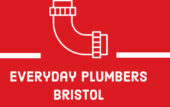What’s the Purpose of a Pressure Relief Valve?
Pressure relief valves play a crucial role in various industries, ensuring the safety and functionality of equipment and systems that operate under pressure. These valves are often the unsung heroes in maintaining the integrity of pipelines, vessels, and other pressurized systems. In this article, plumbers Bristol will delve into the purpose, importance, and working principles of pressure relief valves, shedding light on their indispensable role in preventing catastrophic failures and safeguarding lives and property.

Understanding Pressure Buildup
Before we dive into the specifics of pressure relief valves, it’s essential to grasp the concept of pressure buildup in various industrial applications. Pressure is a force exerted on the walls of a container or vessel, resulting from the confinement of a fluid (liquid or gas) within that space. This pressure can increase due to factors like temperature changes, chemical reactions, or system malfunctions.
The Role of Pressure Relief Valves
Pressure relief valves, often referred to as safety valves, serve as a safeguard against excessive pressure within a system. Their primary purpose is to prevent catastrophic failures by releasing excess pressure when it reaches dangerous levels. Here’s how they work:
1. Pressure Set Point
Every pressure relief valve is designed with a specific pressure set point, which is the pressure at which the valve activates to relieve excess pressure. This set point is carefully calibrated based on the system’s requirements and safety standards.
2. Lift and Release
When the pressure within the system exceeds the set point, the pressure relief valve activates. It lifts its valve disc or piston, creating an opening through which the excess pressure can escape. This prevents further pressure buildup that could lead to a disaster.
3. Safe Discharge
The released fluid (usually gas or liquid) is safely discharged to the atmosphere or a designated relief system, away from any potential hazards. This ensures that the pressure is reduced to a safe level, protecting the system and its components.
Importance of Pressure Relief Valves
The significance of pressure relief valves cannot be overstated. They serve several critical purposes, including:
1. Equipment Protection
Pressure relief valves safeguard equipment, pipelines, and vessels from damage caused by overpressure, which can lead to leaks, ruptures, and costly repairs.
2. Environmental Safety
Preventing overpressure incidents helps minimize the risk of hazardous material releases into the environment, protecting ecosystems and public health.
3. Personnel Safety
Pressure relief valves play a pivotal role in ensuring the safety of operators and maintenance personnel who work with pressurized systems.
4. Compliance with Regulations
Many industries are subject to strict regulations that require the use of pressure relief valves to meet safety and environmental standards.
Types of Pressure Relief Valves
Pressure relief valves come in various types, each designed for specific applications. Common types include:
1. Spring-Loaded Safety Valves
These valves use a spring mechanism to control the pressure set point and are commonly found in steam boilers and other industrial applications.
2. Pilot-Operated Relief Valves
Pilot-operated relief valves use a smaller control valve to manage the pressure and are often used in high-pressure systems like those found in the oil and gas industry.
3. Balanced Bellows Valves
Balanced bellows valves are suitable for applications with high back pressure, as they provide stability and precision in relieving excess pressure.
Pressure relief valves are unsung heroes in the industrial world, ensuring the safety of equipment, the environment, and personnel. Their purpose is simple yet indispensable: to prevent overpressure incidents and the potential disasters that could result. By understanding their role and importance, industries can continue to operate efficiently and safely.
FAQs (Frequently Asked Questions)
1. What happens if a pressure relief valve fails?
If a pressure relief valve fails to operate correctly, it can lead to catastrophic overpressure incidents, potentially causing equipment damage, leaks, or even explosions.
2. How often should pressure relief valves be tested?
Pressure relief valves should be tested regularly according to industry standards and guidelines, typically at least once a year, to ensure they function correctly.
3. Can pressure relief valves be manually opened?
In most cases, pressure relief valves should not be manually opened, as doing so can damage the valve or disrupt its calibration. Only trained personnel should perform maintenance and testing.
4. Are pressure relief valves used in residential applications?
Pressure relief valves are commonly used in residential water heaters and boilers to ensure safe operation and prevent overpressure incidents.
5. What is the lifespan of a pressure relief valve?
The lifespan of a pressure relief valve can vary depending on factors like usage, maintenance, and the environment. However, they should be inspected and tested regularly to ensure they remain in good working condition.
